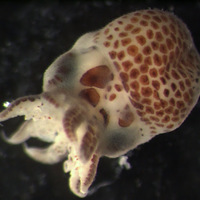- Octopus behavior, Conservation Biology, Animal reproduction, Zoology, Invertebrate Zoology, Octopus, and 12 moreMarine Biology, Sexual Selection, Cephalopods, Ecosystem-based Fishery Management, Molluscan Biology, Coral Reef Ecology, Malacology, Marine Ecology, Coral Reefs, Coral Reef Ecosystems, Marine Larval Biology & Ecology, and Marine Conservationedit
Research Interests:
Research Interests:
Research Interests:
Research Interests:
Research Interests:
Research Interests:
Microsatellites are the markers of choice for a variety of population genetic studies. The recent advent of next-generation pyrosequencing has drastically accelerated microsatellite locus discovery by providing a greater amount of DNA... more
Microsatellites are the markers of choice for a variety of population genetic studies. The recent advent of next-generation pyrosequencing has drastically accelerated microsatellite locus discovery by providing a greater amount of DNA sequencing reads at lower costs compared to other techniques. However, laboratory testing of PCR primers targeting potential microsatellite markers remains time consuming and costly. Here we show how to reduce this workload by screening microsatellite loci via bioinformatic analyses prior to primer design. Our method emphasizes the importance of sequence quality, and we avoid loci associated with repetitive elements by screening with repetitive sequence databases available for a growing number of taxa. Testing with the Yellowstripe Goatfish Mulloidichthys flavolineatus and the marine planktonic copepod Pleuromamma xiphias we show higher success rate of primers selected by our pipeline in comparison to previous in silico microsatellite detection methodo...
Research Interests:
Research Interests:
Octopus oliveri is a widespread and common rocky intertidal cephalopod that mates readily in the laboratory, but for which mating behavior has not been reported previously. Four sets of behavioral experiments were recorded wherein three... more
Octopus oliveri is a widespread and common rocky intertidal cephalopod that mates readily in the laboratory, but for which mating behavior has not been reported previously. Four sets of behavioral experiments were recorded wherein three males, in varying order, were introduced to each of the six females, for a total of 24 females and 12 males. Video analysis shows that successful mating occurred in each of the mount, reach and beak-to-beak positions. Mating was observed for all males, regardless of size relative to the female, or order of introduction. Females showed preference for the first male to which they were introduced in experimental pairings rather than any specific male trait, and mating time increased significantly with increasing female size. Five novel microsatellite markers were developed and used to test paternity in the eleven broods resulting from these experimental pairings. We find skewed paternity in each brood, with early male precedence and male size being the ...
Mating behavior among octopuses can be complex and varied, although only a small number of species have been studied in detail. Octopus oliveri is a small, nocturnal, intertidal octopus described from the Kermadec Islands (New Zealand)... more
Mating behavior among octopuses can be complex and
varied, although only a small number of species have
been studied in detail. Octopus oliveri is a small, nocturnal,
intertidal octopus described from the Kermadec Islands
(New Zealand) and occurs also in Japan and Hawaii’i. It
mates readily in lab conditions, making it an ideal candidate
for studies in cephalopod reproduction.
varied, although only a small number of species have
been studied in detail. Octopus oliveri is a small, nocturnal,
intertidal octopus described from the Kermadec Islands
(New Zealand) and occurs also in Japan and Hawaii’i. It
mates readily in lab conditions, making it an ideal candidate
for studies in cephalopod reproduction.
Research Interests:
Chromatophore patterns can be used to identify paralarvae at the species level and are used here to distinguish Octopus oliveri (Berry, 1914) from other Hawaiian cephalopod paralarvae. Eggs, clutches, and hatchlings are described for the... more
Chromatophore patterns can be used to identify paralarvae at the species level and are used here to distinguish Octopus oliveri (Berry, 1914) from other Hawaiian cephalopod paralarvae. Eggs, clutches, and hatchlings are described for the first time in O. oliveri. Preservation times are compared to illustrate variation in founder chromatophore patterns even among individuals of the same brood.
